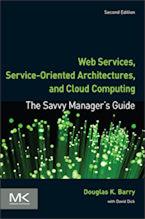XML Background
XML shares common origins with HTML and SGML. SGML or "Standard Generalized Markup Language" was issued as an international standard (ISO 8879) in 1986. It was intended for semantic markup that would assist computer cataloging and indexing. SGML provided flexibility that had not been available before and became very popular and was applied in many ways beyond the intentions of the original developers. It was, however, very complex and expensive.
Brief history
About 1990, Tim Berners-Lee at CERN developed a new, simpler language that could be used in place of SGML. Thus was born HTML or "Hyper Text Markup Language." It was intended to be a simpler language that did not require expensive authoring tools. HTML succeeded beyond anyone's expectations but it lacked a certain flexibility that developers wanted. Various groups made changes and added extensions until HTML's roots had been mangled.
In the summer of 1996, a working group at W3C was formed to create a markup language that would combine the strength of SGML with the simplicity of HTML. The first official draft specification for XML was released in November 1996. XML version 1.0 became a W3C recommendation in 1998.
XML appeared just as the growth of the Web has increased the number of developers who demand the ease and flexibility that it provides.
Presentation, Communication and Storage of Data
The basic structure of XML is the document. This terminology, however, might cause one to think of XML as only a richer, more flexible HTML. It is richer and more flexible, but it can be so much more as well.
Thinking of XML as a document allows you to see how it can be used for presentation of data. This presentation can be detailed and useful. Most browsers now handle XML for presentation.
XML does, however, actually go beyond documents. It can be used for the communication of data as well. XML uses a flexible tagged structure that makes it more robust than a fixed record format for communication. See Web Services.
Finally, XML can also be used to define the storage of data. The same flexible tagged structure can be used when storing data. See XML databases.
Context for XML Background
Related Articles for XML Background
Author
Douglas K Barry
Principal
You may use this material for your work or classes. Reprint Policy. Be sure to check the menu at the left for other articles available on this site.
The Savvy Manager's Guide
Douglas K Barry is also the author of a book that explains Web Services, service-oriented architecture, and Cloud Computing in an easy-to-understand, non-technical manner.
Web Services, Service-Oriented Architectures, and Cloud Computing: The Savvy Manager's Guide (Second Edition)
by Douglas K Barry with David Dick
This is a guide for the savvy manager who wants to capitalize on the wave of change that is occurring with Web Services, service-oriented architecture, and—more recently—Cloud Computing. The changes wrought by these technologies will require both a basic grasp of the technologies and an effective way to deal with how these changes will affect the people who build and use the systems in our organizations. This book covers both issues. Managers at all levels of all organizations must be aware of both the changes that we are now seeing and ways to deal with issues created by those changes.

